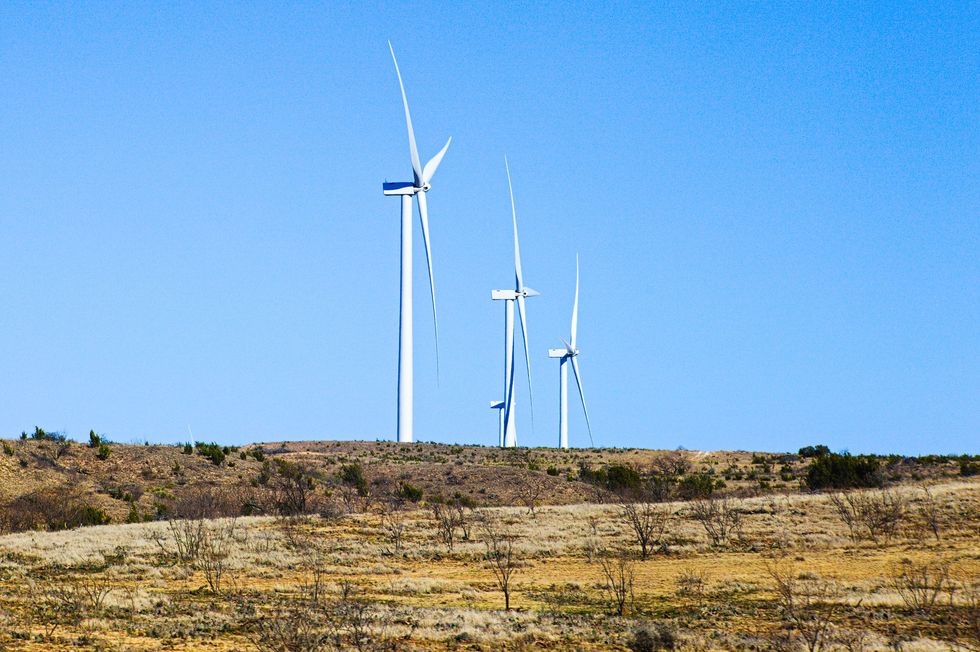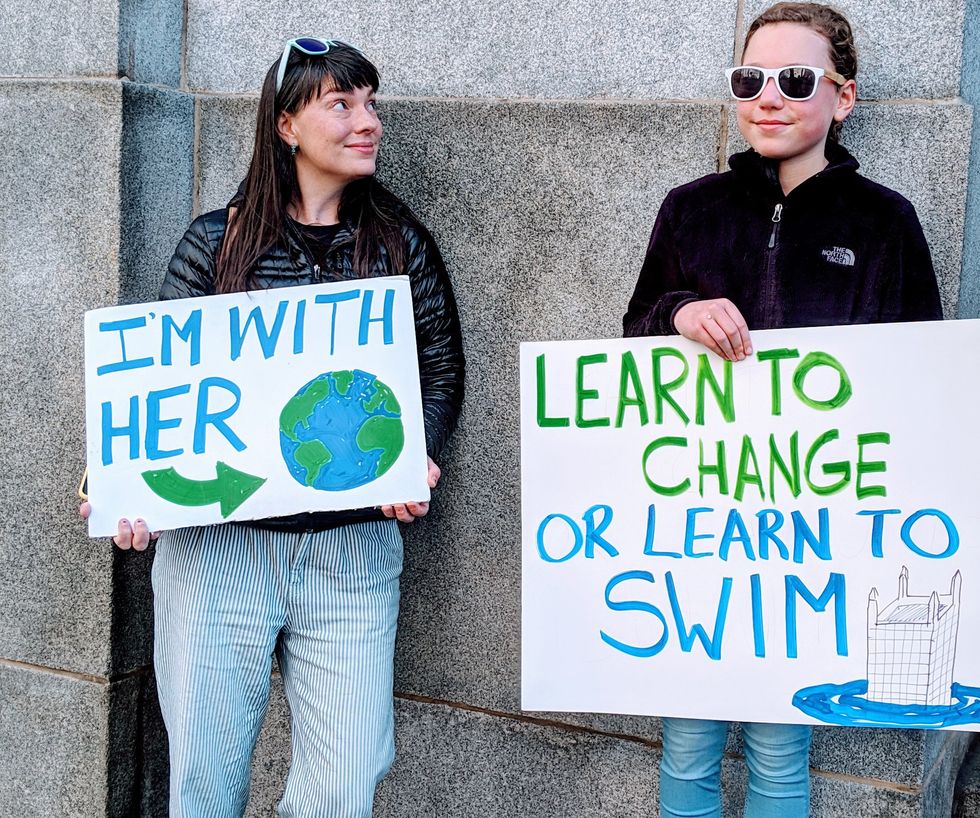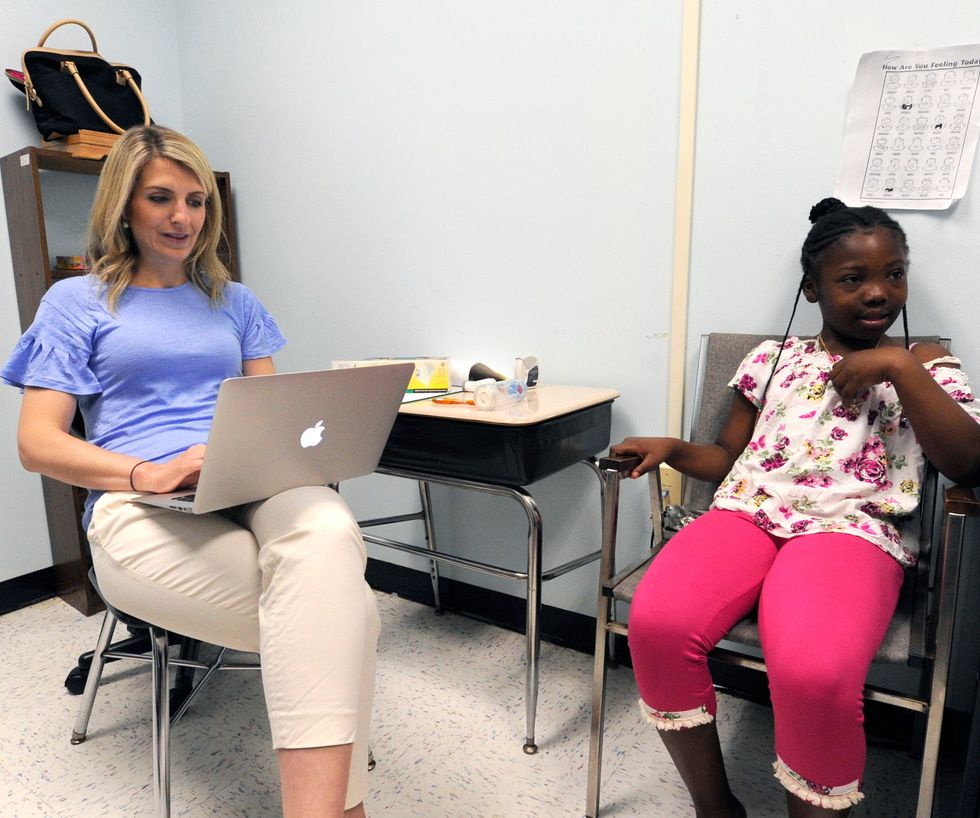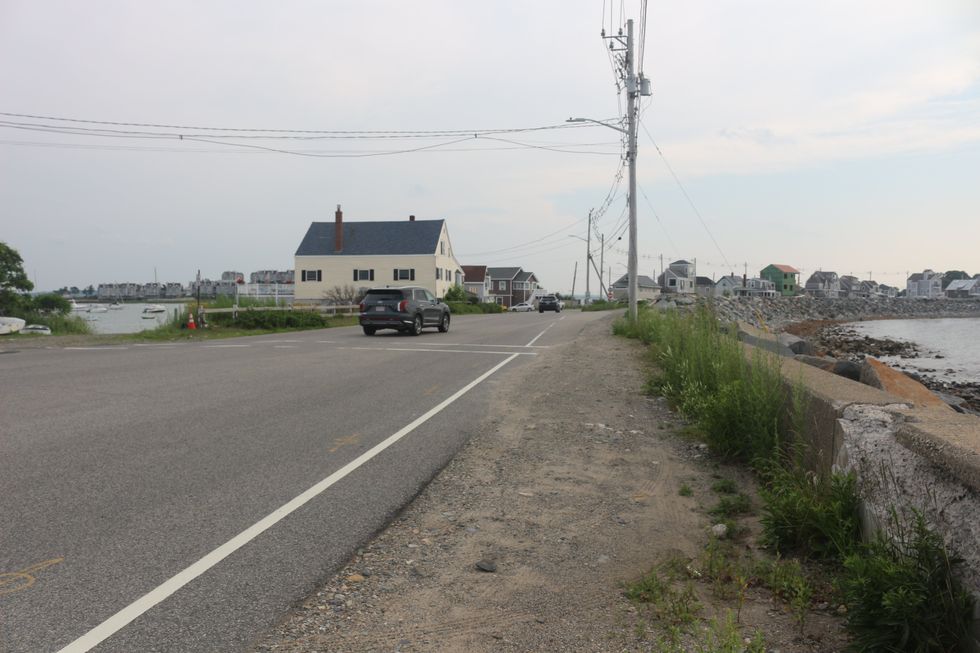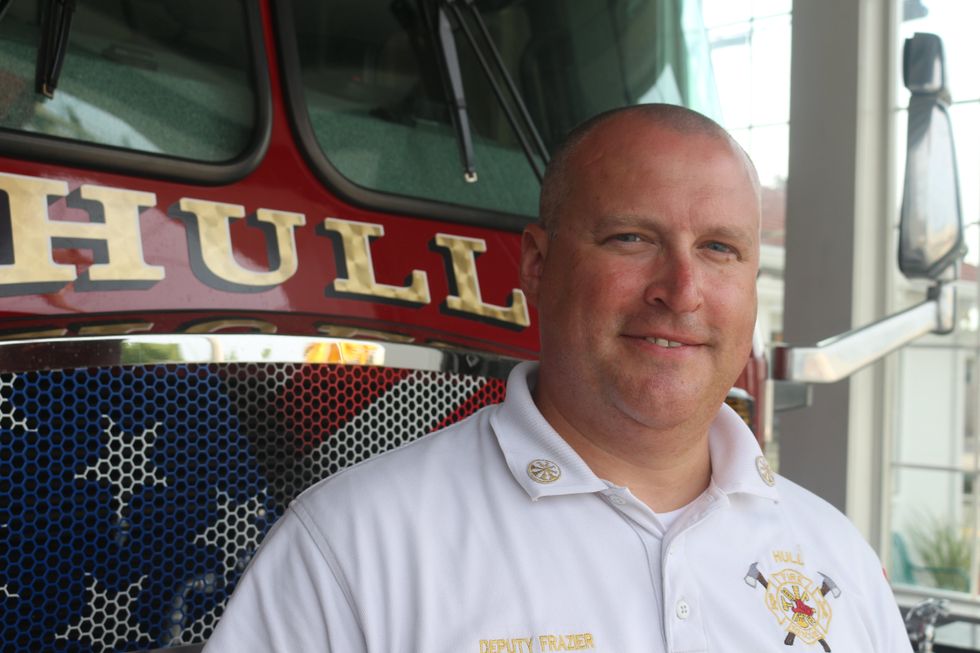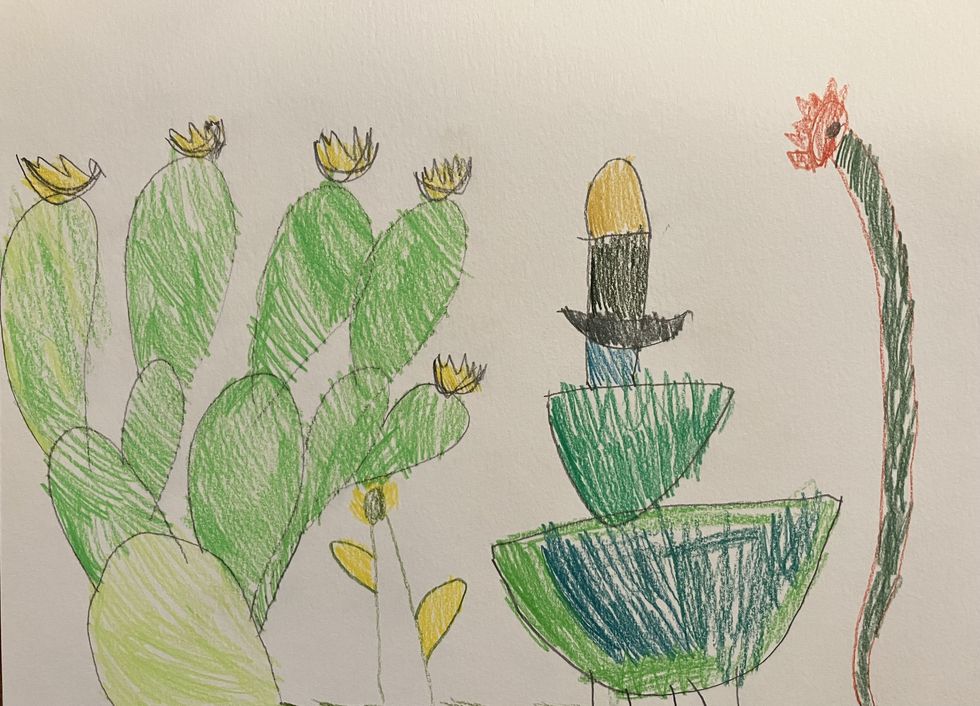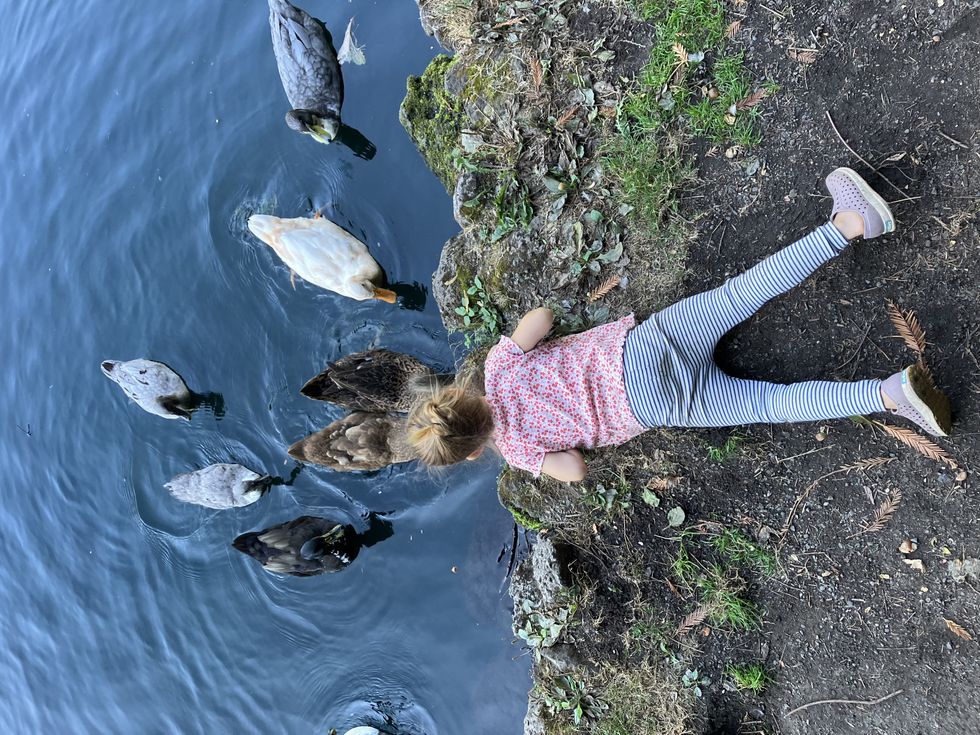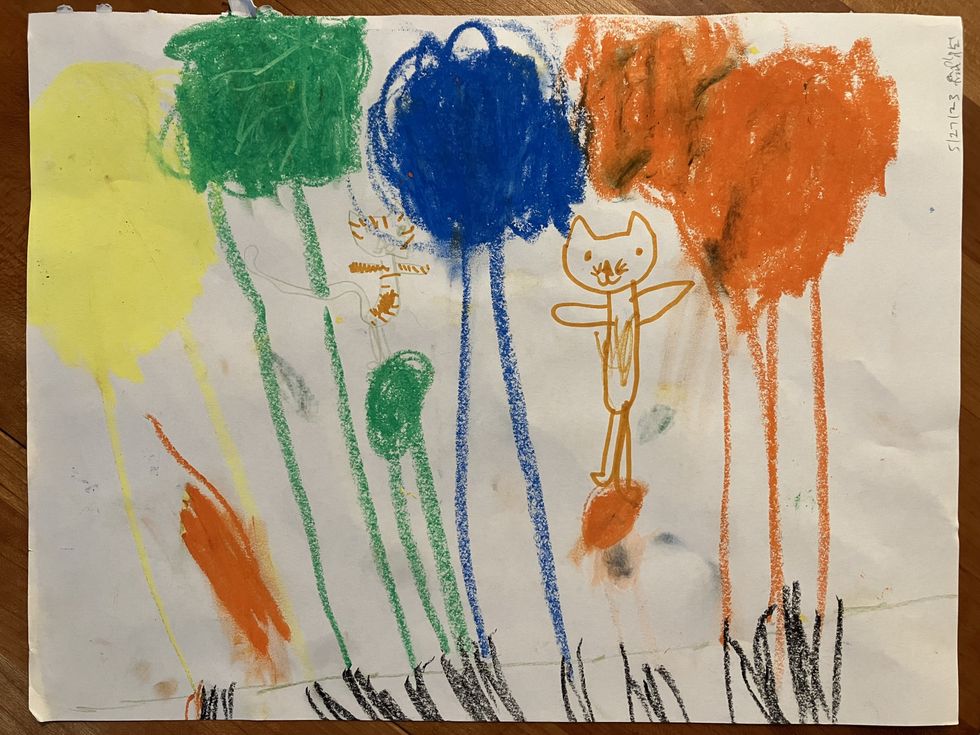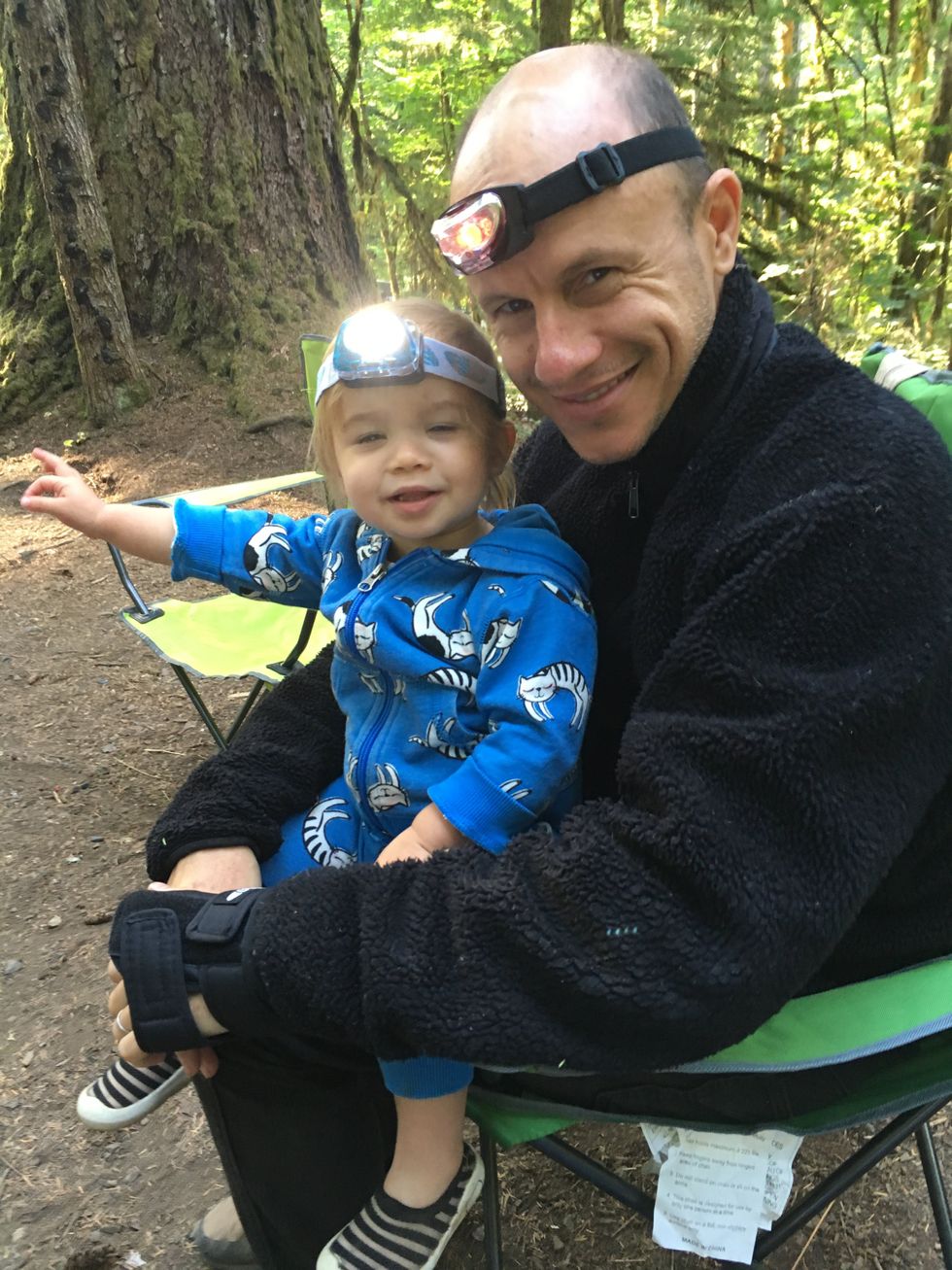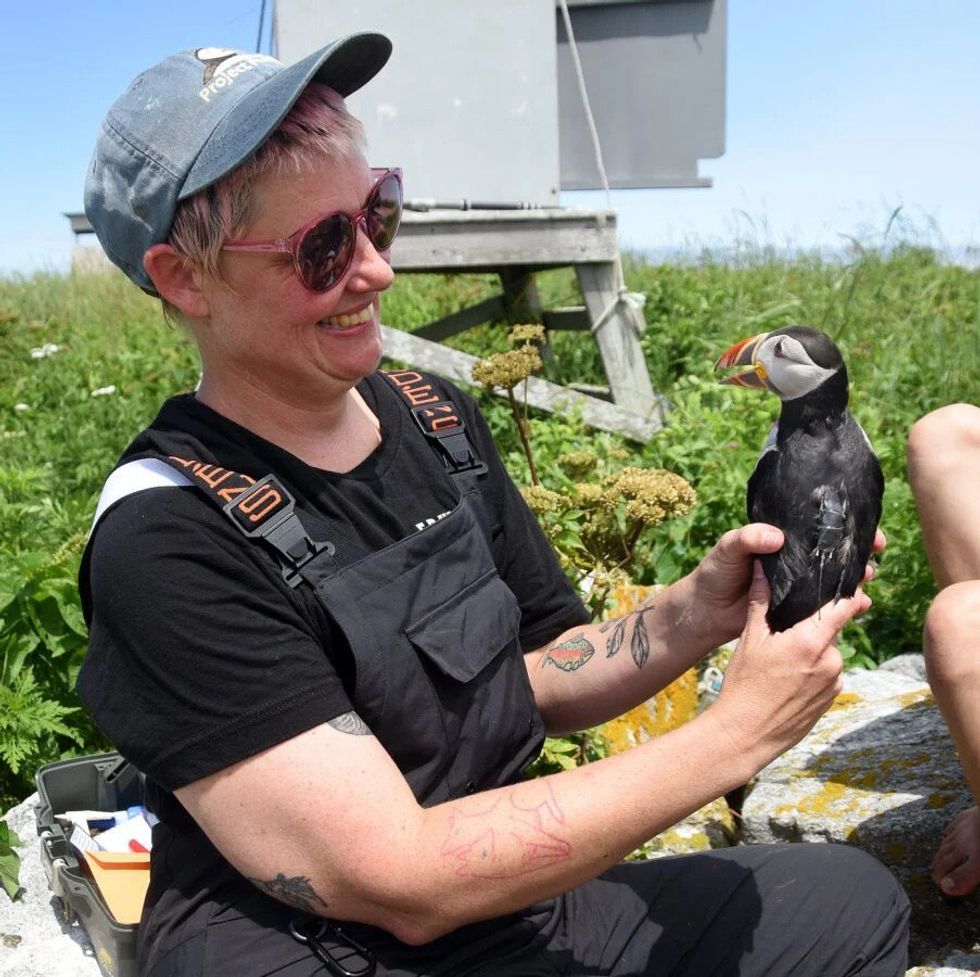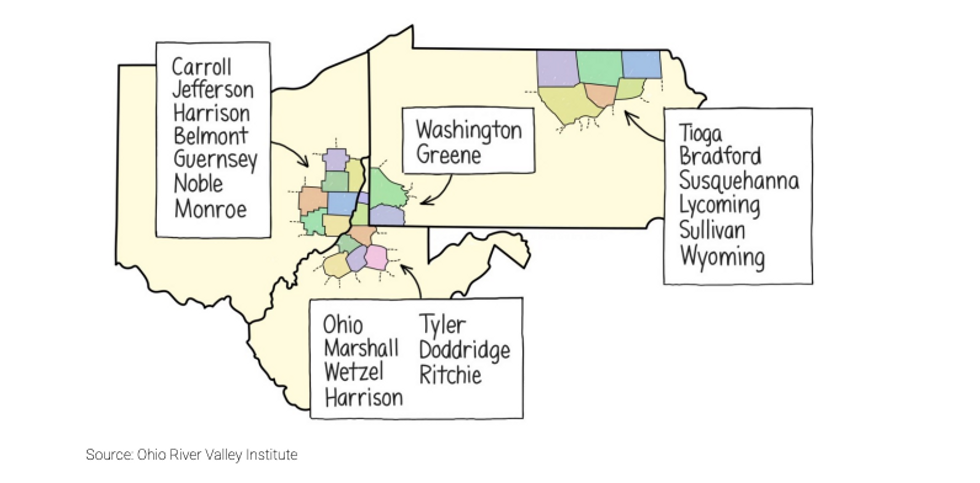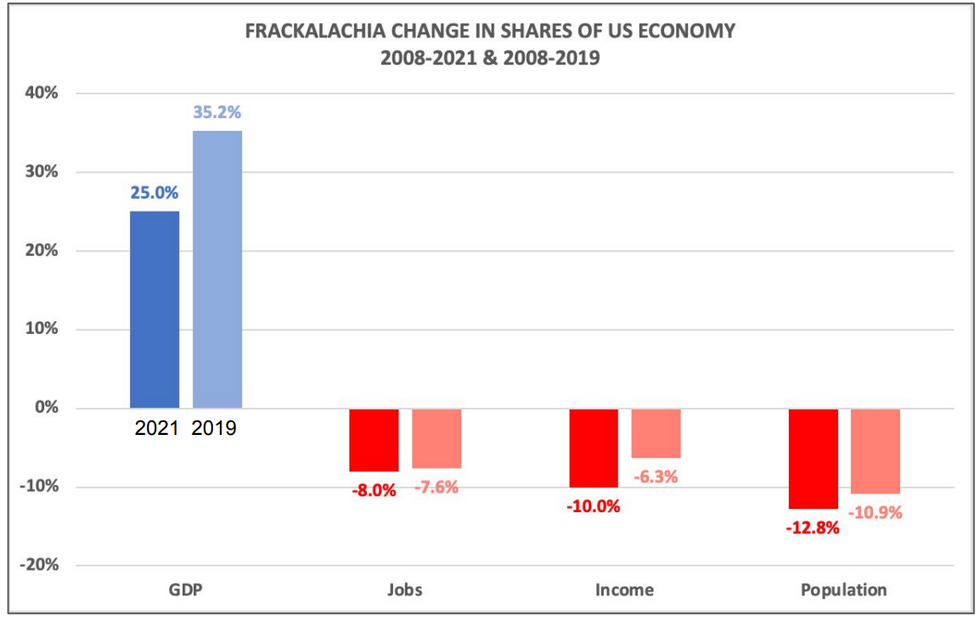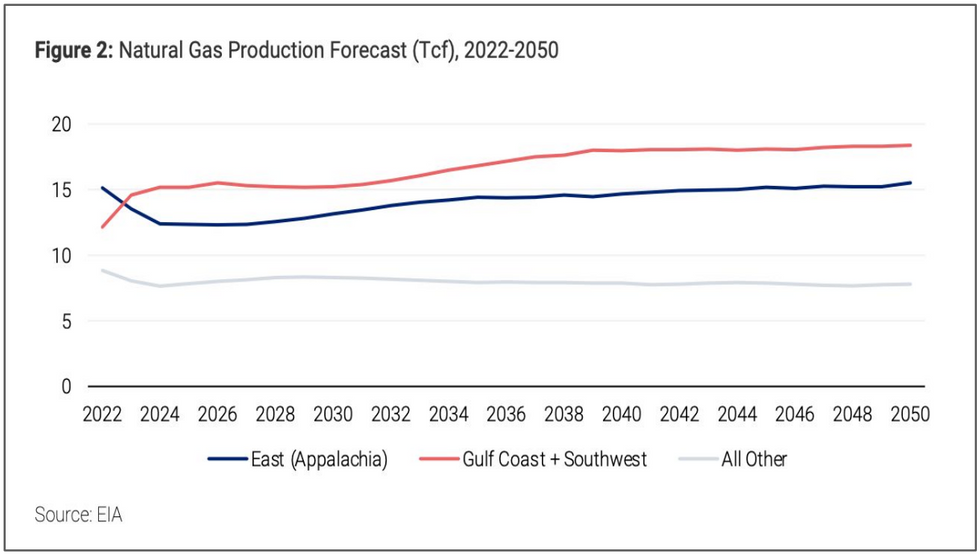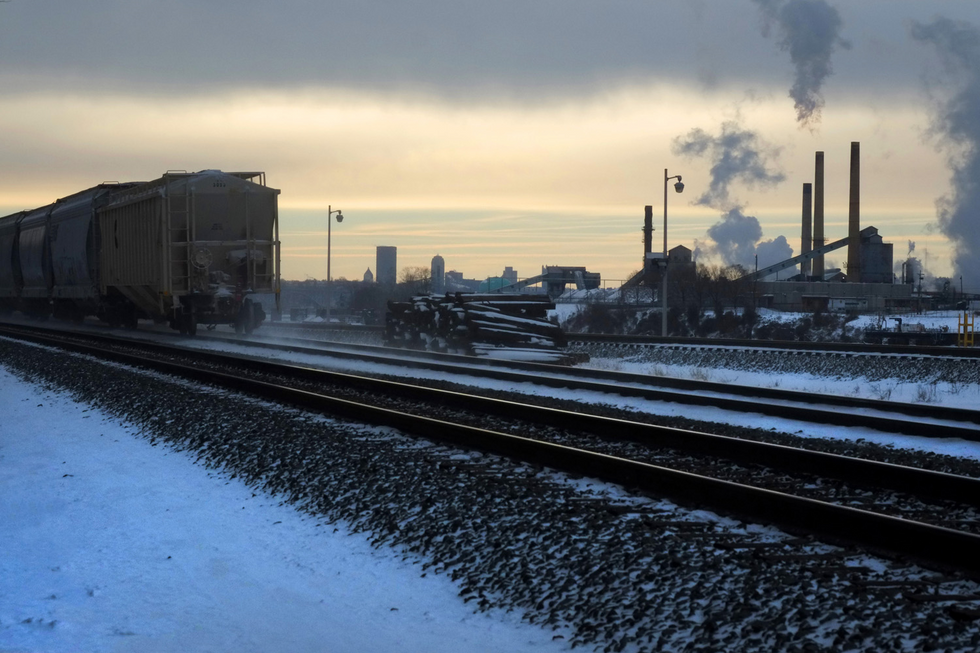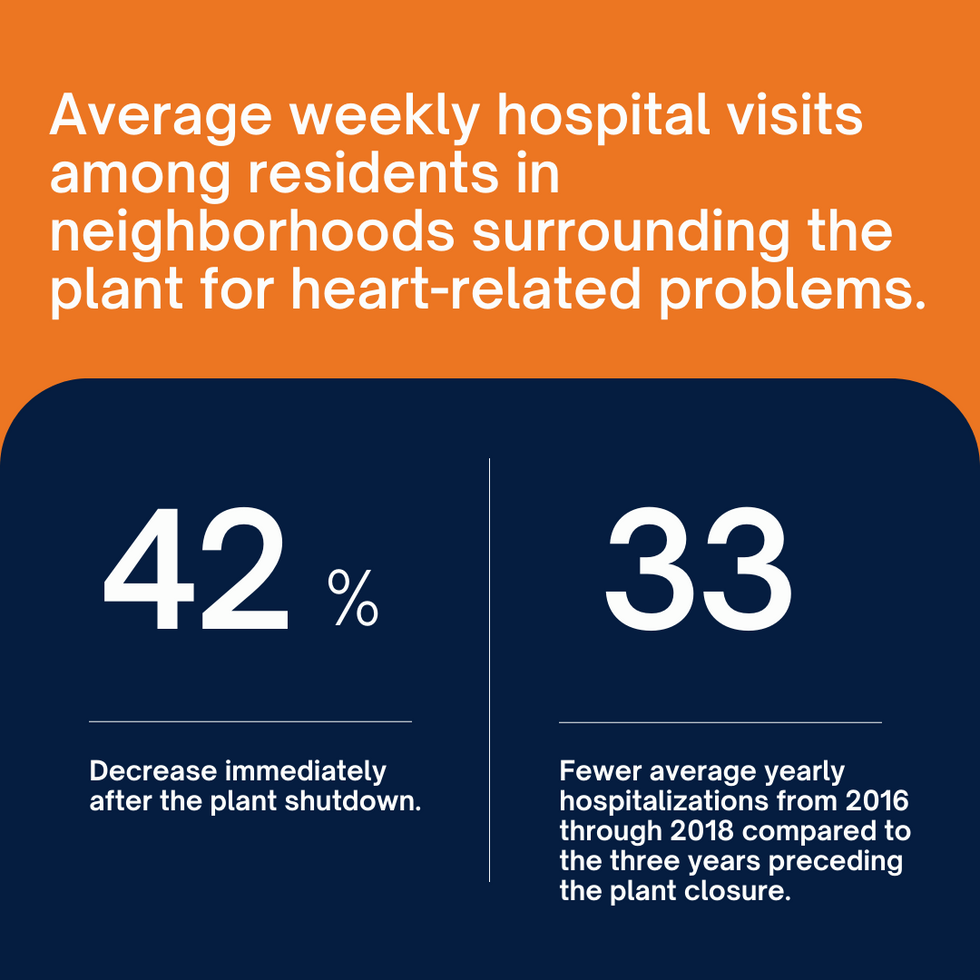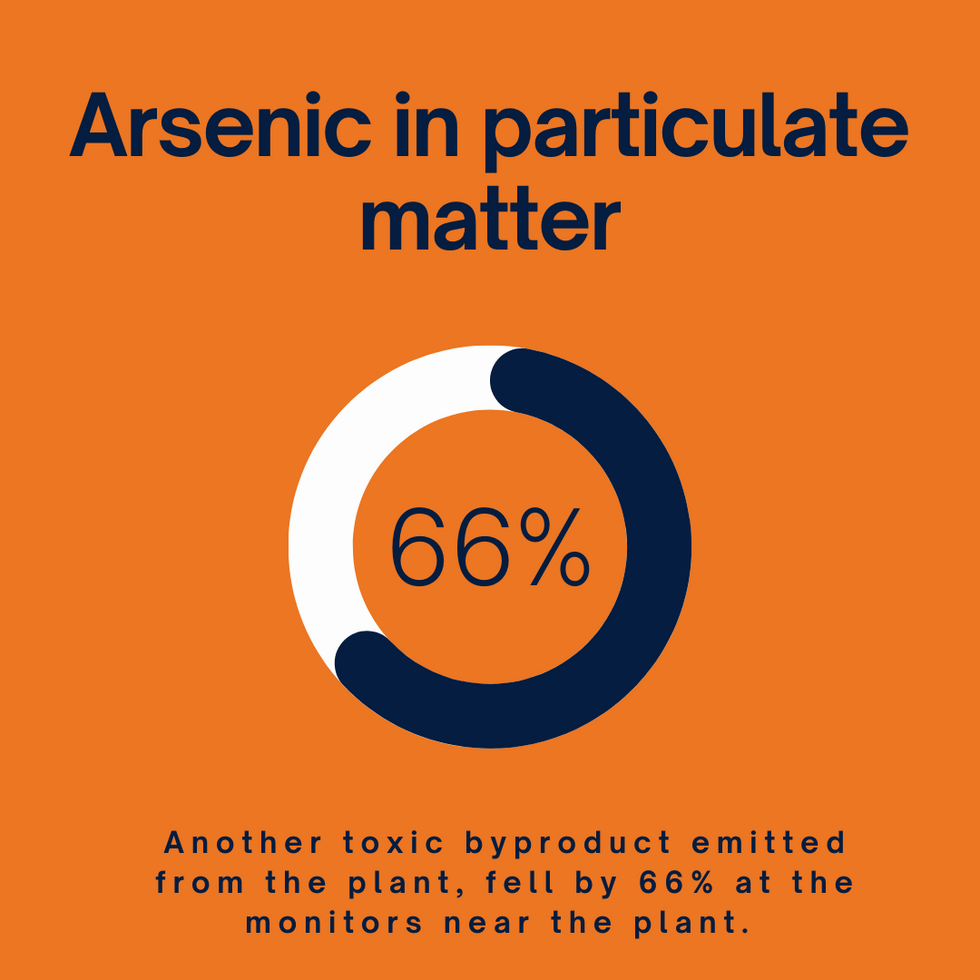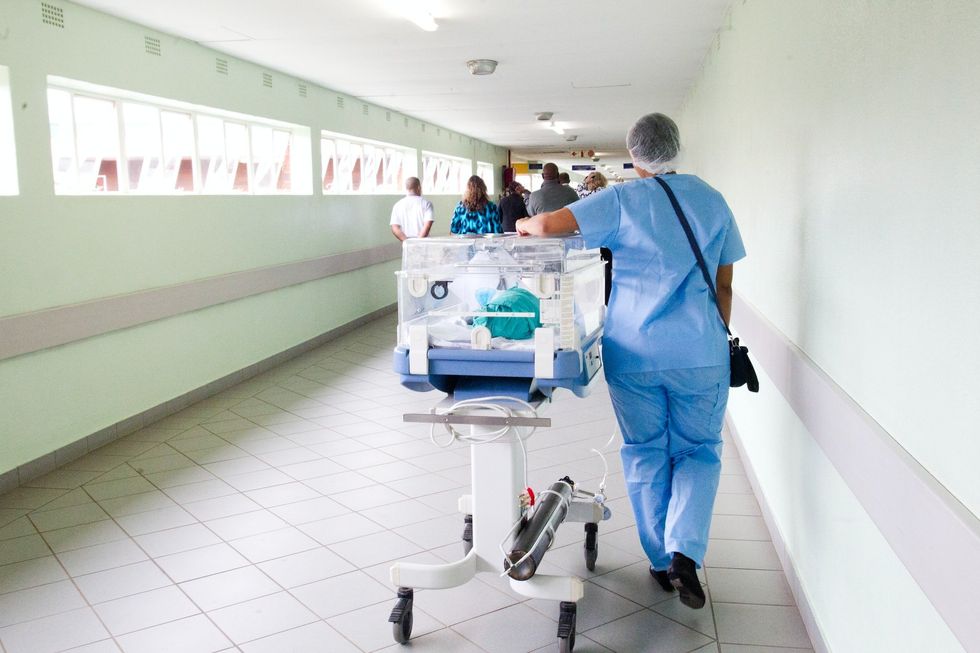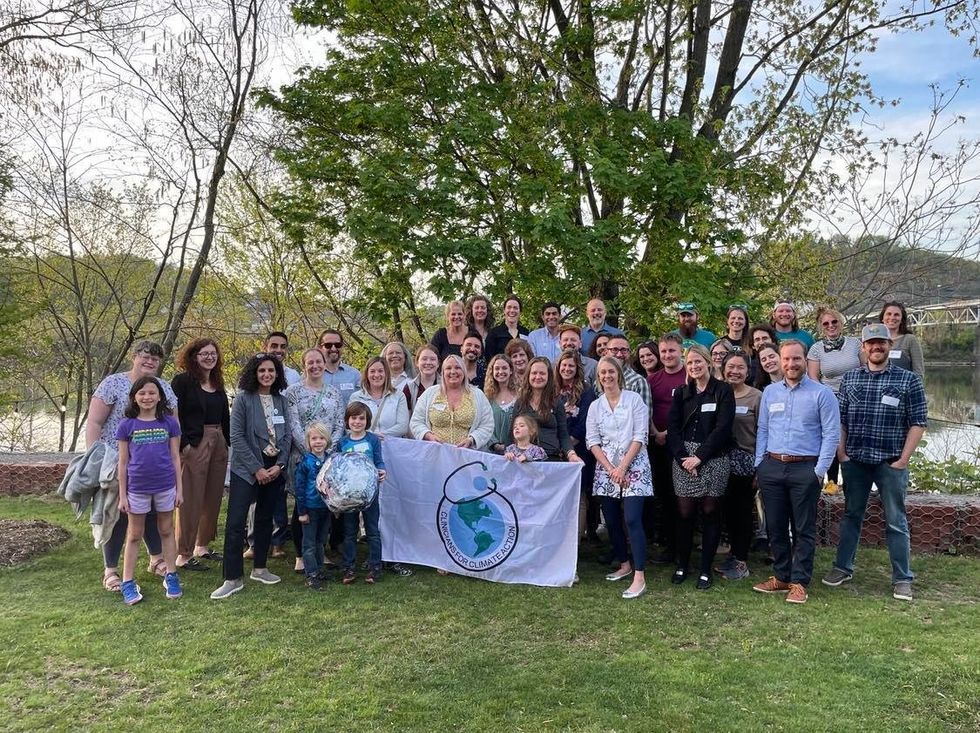Dr. Carlos Gould joins the Agents of Change in Environmental Justice podcast to discuss his latest research on wildfire smoke’s impact on our health, and how we can protect ourselves.
Gould, a senior Agents of Change fellow and assistant professor at the University of California, San Diego School of Public Health, recently published multiple wildfire smoke studies with colleagues that looked at everything from health effects to ER visits to air pollution trends.
The Agents of Change in Environmental Justice podcast is a biweekly podcast featuring the stories and big ideas from past and present fellows, as well as others in the field. You can see all of the past episodes here.
Transcript
Brian Bienkowski
All right, I'm joined by senior fellow Carlos Gould. Carlos, it is so good to see you.
Carlos Gould
Yeah. Likewise, Brian, I'm really happy to be talking.
Brian Bienkowski
And where are you today?
Carlos Gould
I am in sunny San Diego.
Brian Bienkowski
Sunny San Diego. All right. So good. So good to hear about that we are in gray, Michigan on this end of the line. But but here we are. And we are really excited to talk to you because you've been doing a lot of really important research since you left our program, and I'm sure before it as well, but really timely stuff. And that's why I wanted to talk to you today. So we're speaking in, you know, mid to late October, typically the end, the tail end of wildfire season, historically anyway, but that season and expectations have been shifting, as most of us know. I know here in Michigan's Upper Peninsula where I'm at, we dealt with terrible Air Quality Early in the summer from Eastern Canada's wildfires, something I've never experienced living in Michigan pretty much my whole life. So before we get into your research, can you just give us kind of an overview of why wildfires seem to be worsening, and getting more unpredictable and kind of what stood out to you about the 2023 season so far?
Carlos Gould
Yeah, thanks, Brian. It's been very timely work in a way that in what we do, you never really hope happens. And but it does feel all the more important to be thinking about why wildfires are changing. And basically, we think that that's a combination of factors. Partially, you know, human-driven around policy, especially in North America driven about, you know, suppression, fire suppression, that has led to a lot of fuels that are on the ground. So there's just a lot more trees, because we haven't been letting fires burn, and a warming climate that has led to these fuels, again, we're thinking trees and woody biomass of other sorts, being drier and more flammable. And then it's another human problem, which is more humans in this wildland urban interface that lead to, you know, greater probabilities of ignitions. And it's really led to, you know, bigger, more frequent wildfires, which has, of course, then led to loss of wildfire smoke in wildfires are really, really hard to predict. And in that makes it very challenging for informing public health about, you know, when and where to be thinking about these things. Of course, they happen broadly, during a wildfire season. But you know, wildfires are caused, a lot of them are caused by lightning strikes, which are as good as random. And, and then, you know, the other half of it is is humans again, who are also fairly unpredictable. We know where they interface with the with the wild lens, at least, but you know, it's hard to know when and where a wildfire will start. And then for smoke, which is what I've been studying a lot, part of the spread of wildfires and the wildfire smoke is the wind, which at any given moment is as good as random. So these are a lot of really random factors that go into this. And this year has been really remarkable for a couple of reasons. One is that this hasn't been really a function of fires in the western US, of course, source, a lot of this has been driven by Canadian fires. And so even though it's going to be has probably been the worst wildfire smoke year on at least recent record, you know, it wasn't a western-US-derived problem. So that's very new and introduces difficulties for how to think about policy. This year, the facts have just been alarming. On June 7, my birthday, we estimated that more than 60 million US residents were exposed to at least 50 micrograms per cubic meter of wildfire smoke PM 2.5, the small particles, that's a fifth of us to wildfire, specific pollution, five times larger than our air quality guidelines. And your New York City, where, you know, I started my environmental health science career, pollution levels were at more than 30 times our air quality guidelines, it's really alarming stuff.
Brian Bienkowski
And so you were part of a large effort to review the research and health effects of wildfire smoke, and I think, myself included and people that live, you know, east of the Mississippi or, you know, in these regions that don't really experience this. I know, I had a lot of people around here that said, I ride in a cycling club, for example, and people like, "well, we're still gonna ride." And of course, me as an environmental journalist, I'm looking at the air quality map and thinking "well, I don't think I am." So I think there's just a lot of misgivings about what this actually does to us. So what do we know for sure about health effects? And what is kind of still unknown?
Carlos Gould
Yeah, well, we know that breathing in fine particulates, be they from cars, factories, cooking dust, wildfires, it's not good for your health. We know it's especially bad if you inhale a lot of air pollution, and you inhale it for a long time. So periods of like these, you know, New York City wildfires, sorry, New York City wildfire smoke episodes, really high pollution levels that persisted for a couple of days, we know that that's going to be bad. And we know that it's bad for respiratory health in particular. And we can also, there's very strong evidence for detecting damages at this population scale for overall measures like all-cause mortality, or total emergency department visits. We know those go up after wildfire smoke. We know also, that there's been a lot of research on wildfire smoke, but a lot of it has been less clear beyond respiratory outcomes. And these all-cause outcomes. There's an increasing body of evidence that suggests that there's negative impacts for wildfire smoke on pregnancy and birth outcomes. It could is probably through the smoke itself, and also through maternal stress. There is a lot of evidence on worsened mental health during these episodes. Also other cognitive outcomes. There are associations with irritations to the skin and the eyes. There's evidence on cancer. But I think the biggest sort of outstanding question mark that everybody wants to know about is cardiovascular and cerebrovascular outcomes like stroke and heart attack, mainly. And studies have shown really mixed signals some positive, or, you know, better for health, some negative or worse for health, and sometimes no signal at all. And it's really hard to know exactly what explains that. Maybe it's that, you know, wildfire, smoke often happens in such a short period of time, nothing actually happens to your health. Maybe it's an inadequate study design, we don't really know, maybe it's something else. And in the study that we did ourselves beyond summarizing the literature, as I've as I've just done, we also conducted a meta analysis of really good studies that, that estimate an association between a unit of wildfire specific PM 2.5. And same-day outcomes all-cause mortality, which we saw went up by 1.5% per 10 micrograms per cubic meter. Again, for reference, the earlier people in New York were experiencing 300 micrograms per cubic meter. And also, we saw increases for respiratory-related emergency department visits, respiratory-related hospitalizations, really big effects. And we really didn't detect much statistically with cardiovascular outcomes. And so, you know, there are a lot there's a lot that's uncertain right now about what is it is not happening with our health when we breathe in wildfire smoke, and I think a lot of outstanding questions about what explains what we see so far.
Brian Bienkowski
So you mentioned emergency room visits, and you examined ER visits during periods of high wildfire smoke and found that visits may increase during these kind of low-to-moderate smoke events but may decline following extremely smoky days, which is of course, not what we would expect. So can you talk about why this might be happening, especially on the decline in visits?
Carlos Gould
Yeah, absolutely. This It was a really fascinating and fun paper to work on. Because it started with, again, the curve that you've described so far. And I was thinking, well, this can't be right. And then we kept digging. And I think a year later, we finally had a story. And so here's here's what we think is happening. First off, breathing more wildfire, smoke is not better for health and breathing, less wildfire smoke. So that's not it. But what we do think is happening is that for a lot of people, wildfire smoke is salient. In other words, people know when it's happening, either because it's in the news, because people report on it, or because they smell it, or they can see it, and people then change their behavior. And so what we think, again, the low-to-moderate events, people aren't necessarily changing their behavior, a huge amount, at least not on aggregate. And so we see that, you know, wildfire, smoke at low to moderate levels, again, kind of like that New York City, sorry, not that New York City rage, like, you know, five to 10 micrograms per cubic meter, basically just a doubling of your air quality worsening, but those really extreme days, we think that people are changing their behavior in such a way that they're protecting themselves, either from the smoke, or more likely protecting themselves from things where they may otherwise end up in the emergency department think they're staying at home. So they're not driving, they're staying at home, So they're not going to their pickup soccer game, and rolling an ankle, and things of that nature. When we break it down by causes, it's these accidental injuries in particular, and sort of generalized symptoms that are declining, but the respiratory related stuff is still going through the roof. And so for things that we think are really associated with wildfire smoke, respiratory in particular, those those rates are really again, increasing tremendously. And it's these not so related to wildfire, smoke directly, that are declining. So of course, there's this complex non linearity that's happening in the relationship.
Brian Bienkowski
But it makes sense, it's locking us in our house when it's really bad. I mean, that makes sense, like me not being out on my bicycle.
Carlos Gould
Exactly, it's hard to know, you know, exactly, you know, you you are happy riding your bicycle, I have to imagine. And so, you know, there's all sorts of trade-offs here with sort of broad, broad ways of thinking about, you know, public welfare.
Brian Bienkowski
And you mentioned PM 2.5. And one of the main concerns of wildfire smoke is this particular matter, this very fine particulate matter, small air pollution particles that are much smaller than a grain of sand that can penetrate deep into our lungs. So via the Clean Air Act, the US has, for the most part, greatly reduced PM 2.5 levels via industry, traffic, things like that. However, you and colleagues found that this trend might be reversing a little bit, and wildfires may be a culprit. So can you talk about this research and why it's concerning?
Carlos Gould
Yeah, it is really remarkable. I think what we're seeing, and this comes from two different places. One is looking broadly at US air quality and seeing that really, we've we've had tremendous, you know, improvements from the Clean Air Act as as you notice, but recently, trends, and especially the western US have sort of stalled out. So if you just look at a plot of average, you know, PM 2.5, over the, you know, by year over the last 20 years, you can almost see it flatten or even bend upward, following this decline. And so that's piece one where we're, you know, scratching our head trying to understand what's going on there. And then secondly, we had been developing... We had worked for a while on developing a wildfire specific PM 2.5. concentration map by day, and we were talking to reporters about it, and immediately we, you know, sort of, especially Marshall and Marissa, who led the paper that you described, we're trying to think like, is this, you know, really reversing ambient air quality? Because we were were focused more on describing what the wildfire smoke was doing in terms of exposures. But it seemed like this really obvious question and so, through a relatively simple analysis, you know, we tried to quantify basically, the extent to which wildfire smoke was changing the trajectory of state specific ambient PM 2.5 trends and whether that trend had been reversed, stagnated or, you know, no real change and what we found is that, you know, it had significantly slowed or reversed in 20, in two thirds of all of the US states, and totally eroded 20% of all previous gains, and over 50% in some of the some of the Western US. And so we fixed ambient air quality I see fixed in air quotes, through the Clean Air Act to this amazing bipartisan piece of legislation. And now we're seeing another threat. And it's hard to know, you know how we're going to be able to move forward on that.
Brian Bienkowski
And, of course, much harder to regulate through legislation. Because we're not talking about tailpipes and smokestacks anymore. We're talking about forest where somebody may not be kind of on the hook for that, which I'm sure makes us a much more complex problem. And another, you know, another complexity of this is just getting information to people. Again, I use my own example of a place in the country where people were not used to wildfire smoke, I have a sister in law who was pregnant at the time, who would go out on walks and runs. And I would try to tell her don't do that. But of course, she's trying to do the good thing and stay active. And I just think getting information to people is really challenging. So you and your team found that there are different responses among people, especially in kind of low income communities, compared to wealthier locations. Can you talk about these differences and how we might have a more equitable outreach? And response?
Carlos Gould
Yeah, this is it's such a conundrum and something that that, you know, I think, is present across a lot of public health, that information and action often are differing across the wealth spectrum, and a lot of it, we think, is due to ability to respond. And so here, you know, what we see is through sort of proxy measures, but in particular, you know, we think that, again, wildfire smoke is salient for everybody, everybody's aware that there's wildfire smoke in the air, at least on aggregate, of course, you know, in specific parts and specific events, maybe not so much. But the difference is in these sort of close to taking action proxies, and so one that we did was, we looked at the relationship between Google searches and, and wildfire smoke across varying wealth levels, and we saw that searches for air purifiers and filter and you know, air quality improvement devices differ, were much higher in the wealthier communities and much lower in poor communities – suggesting that the wealthier communities are more able or more interested, capable, thinking about taking those kinds of protective actions. And the other thing that we saw was that a lot of people would stay at home, more when, when they're when there's wildfire smoke in the air. But that wasn't the case in poor communities. And so here we see sort of two ways in which we think that the response differs. One is perhaps an ability to take preventive or protective action, or overall, that's what we're seeing, either through staying at home, or through the purchase of goods. And so what do we do about it, of course, is the real question. And we think that, you know, we think that information really does matter a lot. And trying to explain not just that there's a problem, but how to how to do something about it. Of course, staying at home may not be an option for everybody. But you know, when you are at home, protecting your respiratory health and your air quality, to the extent that you can, through even DIY air purifiers, I have one of those in my office, you know, keeping the windows closed, and especially for those vulnerable communities you alluding to your family member that's pregnant. That's who we really need to be protecting. And so I think local, local governments, you know, public libraries, I think can be a great place for A) providing clean air rooms, for those that are vulnerable and making them a gathering space, the way in which some communities have done for cooling centers during heat waves. The other option I think, is loaning out air purifiers and making sure that they're in good working order to those, you know, that are vulnerable during wildfire season. I think that there's I think personally there's a tremendous opportunity for, you know, local communities and doctors too, as soon as, you know, somebody comes in and finds out that they're pregnant, and, you know, they're excited about that, that we offer them a whole, you know, slew of environmental health exposure, you know, reducing technologies that they think could be useful for their lives, you know, make sure that they're drinking clean water, make sure that they're breathing clean air, and whatever way that we can improve, you know, the welfare of those vulnerable communities I think we should.
Brian Bienkowski
So what's next, for your research on this issue, you've seemed to hit it on a lot of different from kind of from impacts to you know, who's who's searching for resources, you've kind of hit it on a lot of angles. What's next for you? And what are you optimistic about in the space?
Carlos Gould
Yeah, I, I think that that's a great question, currently thinking about what happens when people are exposed to both high levels of wildfire smoke and high heat. And, you know, I just know, my first summer here in California, got hit with a brutal heat wave and smoke wave. And it was just awful. And I had no idea what to do. And now I'm just thinking, you know, through all of what we've seen, it's hard to know what happens, how do you protect yourself when it's both really hot, and you want to open your windows, but then it's really smoky. And if you let the smoke get in, that just feels like a mess in a complicated web of nonlinearities in our understanding. And so that's something that I'm working on right now. And trying to understand to what extent those kinds of hot and smoky days are changing over time and across space, and what their impacts are on public health. I would say I am not. That's not something that brings me great hope for the world, because it's, it does not look great, I can put it that way. But what I am hopeful for is that we're so much better now at understanding the health effects of wildfire smoke, because of developments and and better air quality monitoring and remote sensing and computational power. And that's leading us to have better estimates of who's exposed to wildfire smoke, and how much and I think that that's, you know, we're really at the beginning, I think of of really high quality health impact studies and, and quantification of future damages under a changing climate. And we hope that this means that we're going to be able to create responsible policies for controlling wildfires, and protecting wildfire smoke, you know, protecting the public from the from the impacts of that.
Brian Bienkowski
So Carlos, you mentioned kind of individual actions, you know, air purifiers, and maybe even working with medical providers. I just wanted to give you one more opportunity to talk to people here, if people are worried about wildfire smoke. What is this some community individual actions we can take that you haven't mentioned yet?
Carlos Gould
Yeah, we think about limiting the damages of wildfire smoke in three ways, basically, first, you know, don't let health-harming wildfires ignite. The second is limiting the damages from already ignited wildfires. And the third is to limit the health harms from wildfire smoke, the first two of those are going to be real difficult challenges, we need to slow climate change. We need to change incentives around building homes in the wildland-urban interface. And we need to work on, you know, the century of accumulated fuels in fire-prone areas. So for individuals and communities, working on that it starts with voting. You know, these efforts are going to take decades, and we need to work on people, as making sure that people in power are taking these issues seriously and fully considering all of their options. At the community and individual level, you know, it's conversations like this, you know, trying to explain, you know, you know, tell friends about the health impacts of wildfire smoke, you know, tell them that it's complicated, and that, you know, we really do think it's bad, especially at high levels and, you know, to protect the family members that are pregnant or have chronic respiratory issues. And it's I think, coming together as a community to prepare for the inevitable wildfire smoke that is going to come in the same ways that you know, folks that live in Florida might prepare for hurricanes or the same way that you know, folks in the southwest might prepare for heat waves. You know, these things are they're happening. They're happening more and more frequently, and they're not you know, they're bad for health and I think the more that we can be prepared for the reality that we live with wildfire smoke, and that it damages health, I think the better off we're gonna be. And so again, you know, it's it's making sure that those that need to be protected, have clean air to breathe, when they need it. And, you know, we can build DIY air purifiers, we can build them for our nearby elementary schools. We, you know, we can make sure that they're, you know, smart about protecting the health because here's the thing, current policy just says, "Hey, if it's smoking, here's, here's what we got to tell you, you know, make sure that you're protecting yourself." And that's our that's our state and public policy. And so the government isn't doing much to protect us right now. And as we alluded to earlier, it's a really difficult policy question, because wildfires are often considered to be exceptional events, and so aren't really regulated. And this smoke travels so far. So it's really, it's coming together as individuals, as families, as communities, as neighbors, and making sure that when the situation is tough, that we all are breathing clean air.
Brian Bienkowski
Carlos, thank you so much for helping us understand this. Keep up the good work. It was a big old pile of research you sent me in advance of this. So you've been you've been hard at work on this, and I really appreciate it and we'll talk to you soon.
Carlos Gould
Thanks, Brian.
